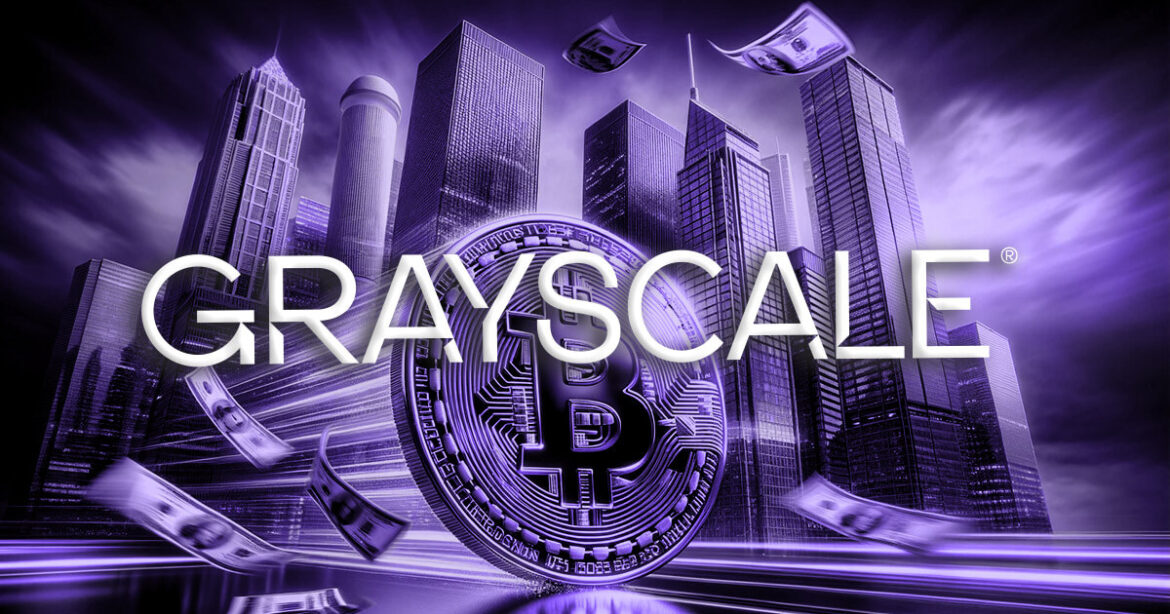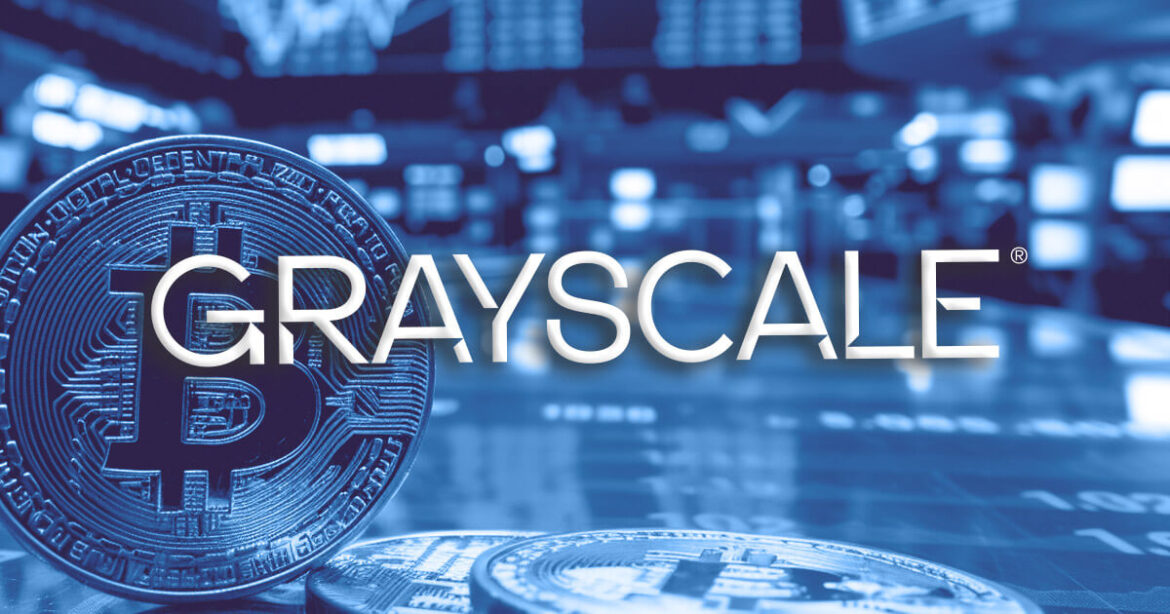 Grayscale Investments has removed cardano from its Digital Large Cap Fund. The crypto fund now holds bitcoin, ethereum, solana, XRP, and avalanche. The crypto asset manager also adjusted the holdings of its Smart Contract Platform Ex-Ethereum Fund. Cardano Removed From Grayscale’s Large Cap Fund Grayscale Investments, the world’s largest crypto asset manager, announced Thursday that […]
Grayscale Investments has removed cardano from its Digital Large Cap Fund. The crypto fund now holds bitcoin, ethereum, solana, XRP, and avalanche. The crypto asset manager also adjusted the holdings of its Smart Contract Platform Ex-Ethereum Fund. Cardano Removed From Grayscale’s Large Cap Fund Grayscale Investments, the world’s largest crypto asset manager, announced Thursday that […]
Source link
Grayscale
Grayscale drops Cardano and Cosmos from its crypto funds in quarterly rebalancing

Prominent crypto asset management firm Grayscale has removed two high-profile digital assets, Cardano and Cosmos, from its multi-asset funds as part of its quarterly fund rebalancing.
In an April 4 press statement, the firm revealed that it removed Cardano from its Grayscale Digital Large Cap Fund (GDLC) and Cosmos’s ATOM token from the Grayscale Smart Contract Platform Ex-Ethereum Fund (GSCPxE).
Why Grayscale removed Cardano and Cosmos
According to the firm, the changes were prompted by CoinDesk’s recent rebalancing of its industry sector indices. Grayscale further explained that the components and weightings of each asset are determined according to each index’s methodology and are subject to change without notice.
Consequently, the Cardano held in GDLC was sold off, with the proceeds reinvested in other fund components based on their weightings. The fund’s current weightings include over 70% Bitcoin, 21.84% Ethereum, 4.52% Solana, and less than 3% in XRP and Avalanche.
Similarly, Cosmos was divested from GSCPxE, and the proceeds were utilized to acquire other fund components in proportion. As such, the fund has shifted in its weightings, now encompassing 58.4% of Solana, 14.56% Cardano, 12.25% Avalanche, 8.53% Polkadot, and 6.25% Polygon.
Meanwhile, no new tokens were added or removed from the DeFi Fund, which consists of 48% of Uniswap, 20.41% of MakerDAO, and 13.17% of liquid staking protocol Lido. The lending platform Aave holds 9.99% of the funds, and Synthetix holds 7.69%.
ADA, ATOM declines
ADA and ATOM have faced notable declines during the past day, corresponding with the broader crypto market struggles during the reporting period.
According to CryptoSlate’s data, the top two digital assets, Bitcoin and Ethereum, recorded losses of 0.61% and 3.66%, respectively.
Similarly, Cardano’s ADA and Cosmos’s ATOM fell by approximately 4% to $0.56 and $10.7, respectively, continuing a downward trend that has seen them shed double-digits during the past month.
Meanwhile, other large-cap assets like Solana and Avalanche’s AVAX saw bigger losses, plunging by more than 5% during the reporting period.
The post Grayscale drops Cardano and Cosmos from its crypto funds in quarterly rebalancing appeared first on CryptoSlate.
Despite Grayscale and ARK’s outflows, Bitcoin ETF market records net inflow
Quick Take
Bitcoin (BTC) exchange-traded funds (ETFs) on Apr. 2 experienced a moderate net inflow of $40.3 million, according to Farside data. Particularly noteworthy is the Grayscale Bitcoin Trust (GBTC), which saw a relatively smaller outflow of $81.9 million, signaling a significant slowdown from previous outflows. GBTC has now totaled $15,152.0 billion in net outflows.
Farside data reports that the ARK ETF (ARKB) recorded its largest single-day outflow of $87.5 million, yet it has accumulated total inflows of $2,221.5 billion. On the other hand, BlackRock’s (IBIT) Bitcoin ETF attracted a healthy inflow of $150.5 million, boosting its total net inflow to an impressive $14,274.3 billion. In a positive turn, the Hashdex Bitcoin ETF (DEFI) saw its first net inflow since Feb. 21 of $0.8 million, reducing its total outflows to just $2.9 million.
According to Farside data, cumulative net inflows across all Bitcoin ETFs now stand at $12,083.3 billion.
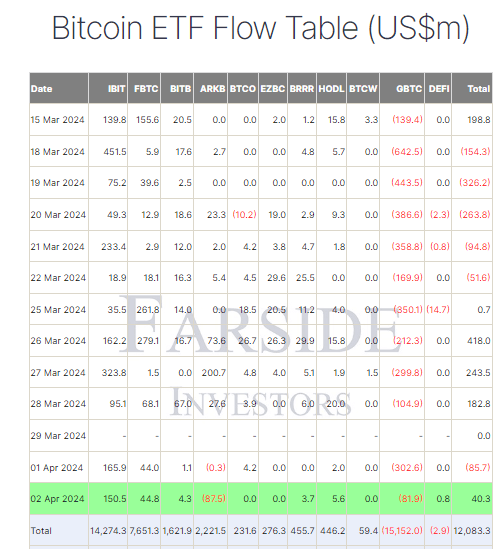
The post Despite Grayscale and ARK’s outflows, Bitcoin ETF market records net inflow appeared first on CryptoSlate.
Grayscale Bitcoin ETF Sees Drastic 60% Drop In Outflows, Why This Is Important
The outflows from the Grayscale Bitcoin ETF rocked the market hard last week, leading to a dramatic decline in the BTC price. However, with the new week, there has been a change in direction as investors begin to get bullish on Bitcoin once more. As a result, the outflows from the Grayscale ETF have slowed down, reaching one of its lowest points for the month.
Grayscale Bitcoin ETF Outflows Drop 60%
Grayscale outflows ramped up last week, spearheading what would turn out to be a full week of outflows from Spot Bitcoin ETFs for the first time ever. The outflows rose rapidly over the week, even moving into the new week. However, inflows into Spot Bitcoin ETFs have been on the rise, which have overshadowed the outflows from GBTC.
Despite the outflows from the GBTC continuing, it has begun to spin into a more positive narrative as the number of BTC flowing out of the fund is declining fast. To put this in perspective, data shows there was 299.8 BTC moved out of the fund on Wednesday, March 27, and on Thursday, March, 20204, this figure dropped to 104.9 BTC, representing a 60% drop.
This marks the second day with the lowest outflows from the Grayscale Bitcoin ETF right behind the March 12 outflows of 79 BTC. It also points to a decline in the volume of outflows as investors start to level out and find their footing elsewhere.
Nevertheless, the GBTC has remained the loser of the Spot Bitcoin ETF race, nursing a full month of outflows so far. Since the ETFs were first approved in January until now, there has been more than $14.6 billion moved out of the fund, which accounts for around 50% of its total balance. These BTC have presumably found a home in other Spot ETF funds which have been seeing massive inflows.
Unlike last week, inflows have also dominated Spot Bitcoin ETFs this week. Total inflows for the week crossed above $800 million, bringing the total Assets Under Management (AuM) to almost $57 billion in less than three months.
Why This Could Trigger A BTC Price Rally
The last time that GBTC outflows saw a slowdown after rising for about a week, it triggered a response from the Bitcoin price in the form of a rally. Inflows also continued to dominate for the next couple of weeks and during this time, the BTC price enjoyed a long stretch of recovery. It went from $40,000 to over $70,000 in the space of two months.
If this trend repeats itself this time around, then another massive BTC price rally could be around the corner. A similar price increase would also put Bitcoin right above $100,000 in the next few months. In this case, the uptrend would be far from over.
At the time of writing, Bitcoin is still struggling to break $70,000 after a 1% drop in the last day.
BTC price jumps above $70,000 | Source: BTCUSD on Tradingview.com
Featured image from Which.co.uk, chart from Tradingview.com
Disclaimer: The article is provided for educational purposes only. It does not represent the opinions of NewsBTC on whether to buy, sell or hold any investments and naturally investing carries risks. You are advised to conduct your own research before making any investment decisions. Use information provided on this website entirely at your own risk.
Grayscale introduces ‘mini’ Bitcoin ETF to alleviate investor tax burdens and curb outflows

Grayscale, the issuer of the world’s largest Bitcoin exchange-traded fund (ETF), has applied for a smaller version of its popular Grayscale Bitcoin Trust (GBTC) ETF under the “BTC” ticker, according to a Mar. 12 filing with the US Securities and Exchange Commission (SEC).
Grayscale said:
“This would be net-positive for existing GBTC investors, who would benefit from a lower blended fee with the same exposure to Bitcoin, spanning ownership of shares of both GBTC and BTC.”
If approved, the proposed ETF will debut a cost-effective iteration of its GBTC ETF. It will be seeded through an undisclosed percentage of GBTC, and shareholders of the current GBTC will seamlessly transition to holding shares in both GBTC and BTC, ensuring no taxable implications.
The proposed ETF will be listed on the New York Stock Exchange, operating independently from Grayscale’s GBTC fund.
Why did Grayscale file for a ‘mini’ ETF?
James Seyffart, an ETF analyst at Bloomberg, explained Grayscale’s maneuver as a savvy move to compete against rivals without compromising on fees for its profitable GBTC investment offering.
Besides that, Seyffart pointed out that the new trust could offer GBTC investors tax-free exposure to the flagship digital asset. He said:
“[The Mini ETF] definitely helps out long term GBTC holders — particularly the taxable ones who were sorta stuck with potential capital gains tax hits. Not a full solution. But way more helpful than launching a standalone product from scratch.”
Furthermore, introducing a miniature version could prevent customers from migrating to more cost-effective alternatives.
GBTC, since its inception in January, has witnessed outflows exceeding $11 billion. This trend is primarily attributed to its high fees of 1.5%, notably higher than competitors charging 0.3% or even less.
Eric Balchunas, Bloomberg senior ETF analyst, opined:
“This way, [Grayscale] can keep some of that juicy 1.5% assets while placating a bit of investors with this treat. Also, BTC then gives something competitive for their salespeople to have when talking to advisors who probably find a 1.5% fee an instant dealbreaker.”
The post Grayscale introduces ‘mini’ Bitcoin ETF to alleviate investor tax burdens and curb outflows appeared first on CryptoSlate.
Grayscale Aims to Launch Mini Bitcoin Trust for Lower Fees and Tax Benefits
 Grayscale has revealed the submission of an S-1 form to the U.S. Securities and Exchange Commission (SEC) for the launch of a new, smaller version of its popular Grayscale Bitcoin Trust (GBTC). This initiative is designed to provide shareholders with exposure to bitcoin, reduced fees and potential tax benefits. Grayscale Unveils Bitcoin Mini Trust With […]
Grayscale has revealed the submission of an S-1 form to the U.S. Securities and Exchange Commission (SEC) for the launch of a new, smaller version of its popular Grayscale Bitcoin Trust (GBTC). This initiative is designed to provide shareholders with exposure to bitcoin, reduced fees and potential tax benefits. Grayscale Unveils Bitcoin Mini Trust With […]
Source link
New Bitcoin ETFs and Grayscale Control a Combined 4% of BTC Supply, Valued at $53 Billion
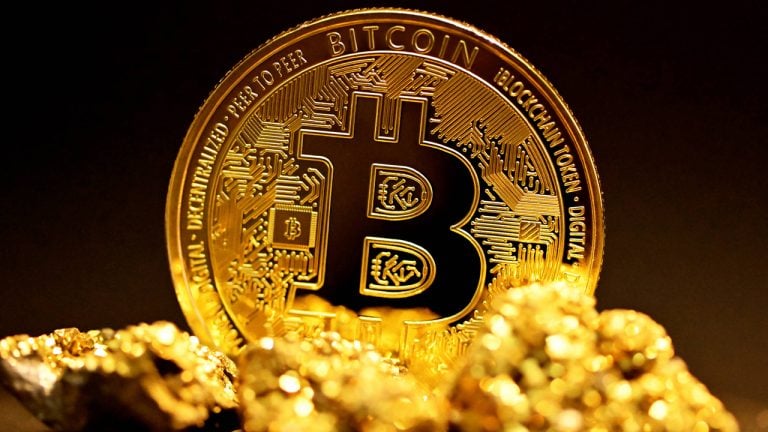 The latest figures reveal that the nine new spot bitcoin exchange-traded funds (ETFs) now control 390,525.3 bitcoins, valued at just over $26 billion at current market rates. These nine ETFs are rapidly approaching the holdings of Grayscale’s Bitcoin Trust (GBTC), which presently has 405,713.31 bitcoins in its possession. Emerging Bitcoin ETFs Challenge Grayscale’s Reign Collectively, […]
The latest figures reveal that the nine new spot bitcoin exchange-traded funds (ETFs) now control 390,525.3 bitcoins, valued at just over $26 billion at current market rates. These nine ETFs are rapidly approaching the holdings of Grayscale’s Bitcoin Trust (GBTC), which presently has 405,713.31 bitcoins in its possession. Emerging Bitcoin ETFs Challenge Grayscale’s Reign Collectively, […]
Source link
Grayscale lobbying for regulatory approval of options for spot Bitcoin ETFs
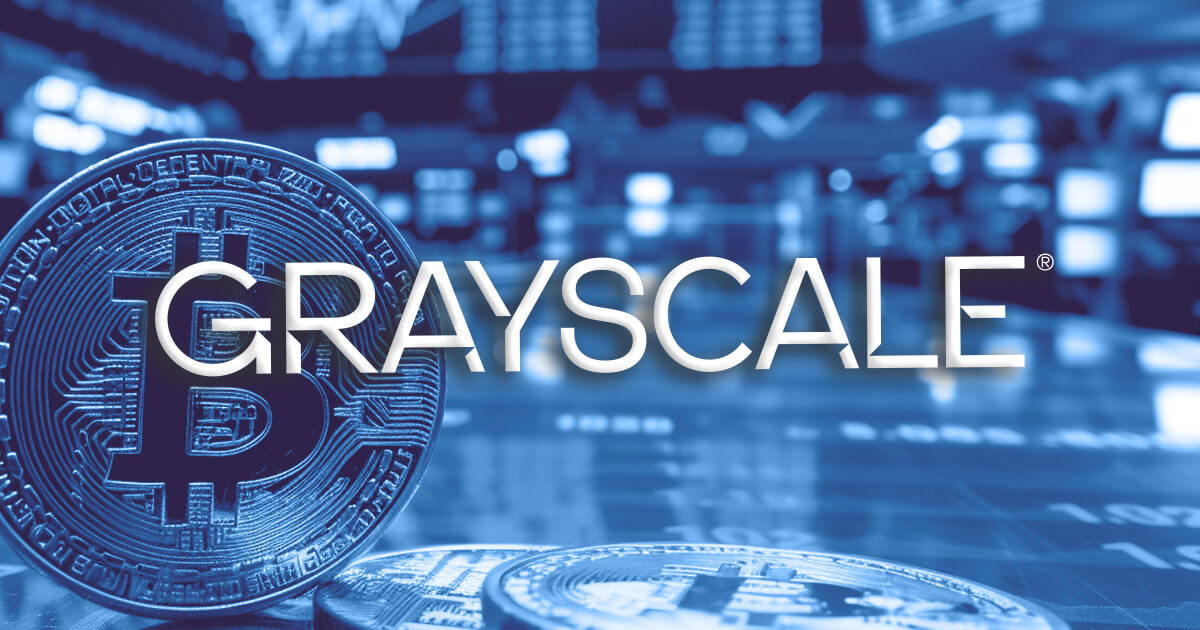
Grayscale is lobbying for the US SEC to approve options on its spot Bitcoin exchange-traded fund (ETF), Reuters reported on Feb. 29.
Grayscale CEO Michael Sonnenshein said:
“It is vital to the interests of GBTC and all spot Bitcoin [exchange-traded product] investors to access exchange-listed options on GBTC and other spot Bitcoin ETPs.”
The SEC approved Grayscale’s spot Bitcoin ETF (GBTC) in January. Unlike most of the other newly approved spot Bitcoin ETFs, GBTC was converted to an ETF from an existing fund.
Options could enhance regulation
According to Sonnsenshein, the SEC’s rejection of options on GBTC would unfairly discriminate against shareholders because the regulator has approved options on Bitcoin futures ETFs.
He added that options could also support spot Bitcoin ETF investment more broadly as they could provide price discovery, assist market condition navigation, and support hedging and income generation.
Furthermore, options would bring BTC within the regulatory perimeter, allowing more market participants, including contract merchants and broker-dealers, to trade the funds.
Grayscale’s letter was reportedly prompted by the SEC’s decision to open comments on options for its ETF on Feb. 23. The regulator’s notice also opened comments on Bitwise’s equivalent ETF and other NYSE-listed trusts that hold Bitcoin.
Previously, in January, the SEC opened comments on options for BlackRock’s Nasdaq-listed spot Bitcoin ETF and various Cboe-listed spot Bitcoin ETFs.
Grayscale is a key ETF player
Grayscale’s communications with the SEC are critical because its past efforts have contributed to approvals. After the SEC dismissed Grayscale’s spot Bitcoin ETF application, the firm initiated a legal case against the regulator and won a victory that compelled the SEC to re-address the matter.
SEC chair Gary Gensler cited that outcome in his agency’s approval of spot Bitcoin ETFs, noting that the legal result made approval the “most sustainable path forward.”
The company and other asset managers have also applied for spot Ethereum ETFs. Grayscale’s application recently gained support from Coinbase on Feb. 21.
While Grayscale’s latest letter does not compel the SEC to act in any way, the company’s past significance means that its comment could influence future outcomes.
Coinbase on Grayscale Ethereum Spot ETF Application: ‘ETH Is a Commodity, Not a Security’
 Coinbase has answered the SEC request for comments on the proposed rule change to list the ETH Grayscale Fund as a spot ETF. Coinbase stated that ether was a commodity, and its status has been publicly recognized in a variety of circumstances by U.S. agencies and courts. Coinbase Supports Ethereum Grayscale Fund Conversion as a […]
Coinbase has answered the SEC request for comments on the proposed rule change to list the ETH Grayscale Fund as a spot ETF. Coinbase stated that ether was a commodity, and its status has been publicly recognized in a variety of circumstances by U.S. agencies and courts. Coinbase Supports Ethereum Grayscale Fund Conversion as a […]
Source link
Grayscale Debuts Privacy-Focused ETF Featuring Zcash Trust Allocation
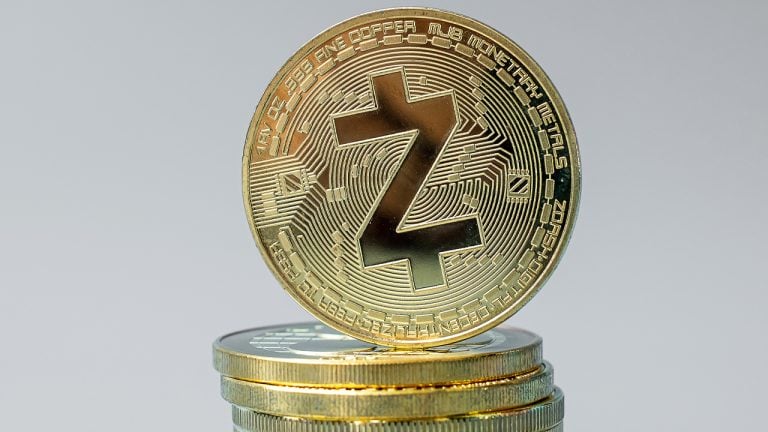 According to a recent Form N-1A, Grayscale has approached the U.S. Securities and Exchange Commission (SEC) with a proposal for a unique exchange-traded fund (ETF) dedicated to the privacy and cybersecurity realm. The Grayscale Privacy ETF aims to be the first to encapsulate the burgeoning sector of privacy technology and cybersecurity. Privacy Takes Center Stage […]
According to a recent Form N-1A, Grayscale has approached the U.S. Securities and Exchange Commission (SEC) with a proposal for a unique exchange-traded fund (ETF) dedicated to the privacy and cybersecurity realm. The Grayscale Privacy ETF aims to be the first to encapsulate the burgeoning sector of privacy technology and cybersecurity. Privacy Takes Center Stage […]
Source link





